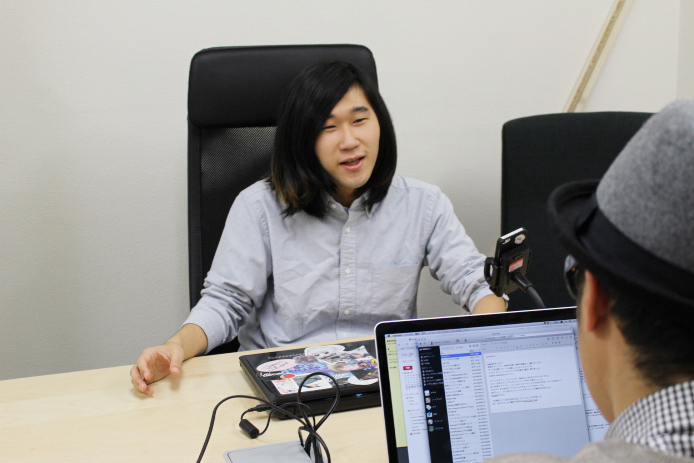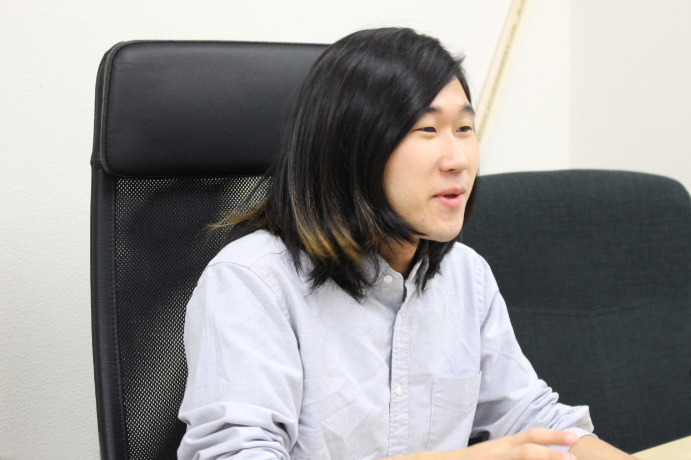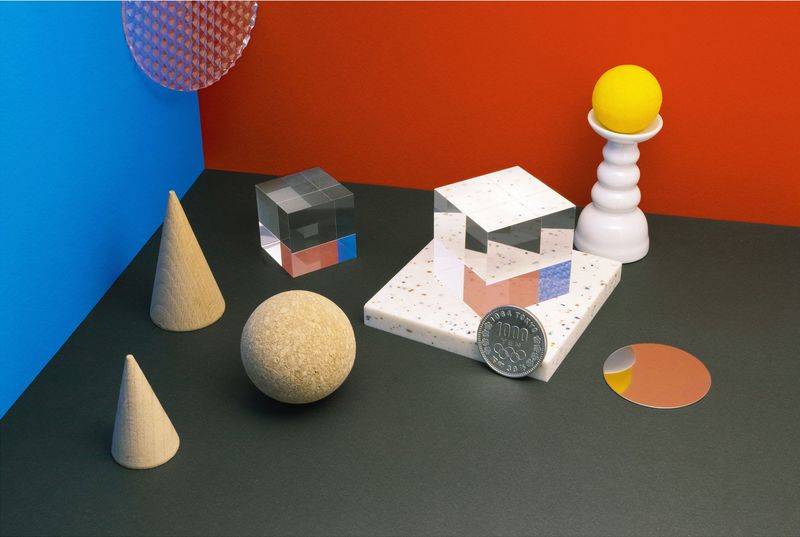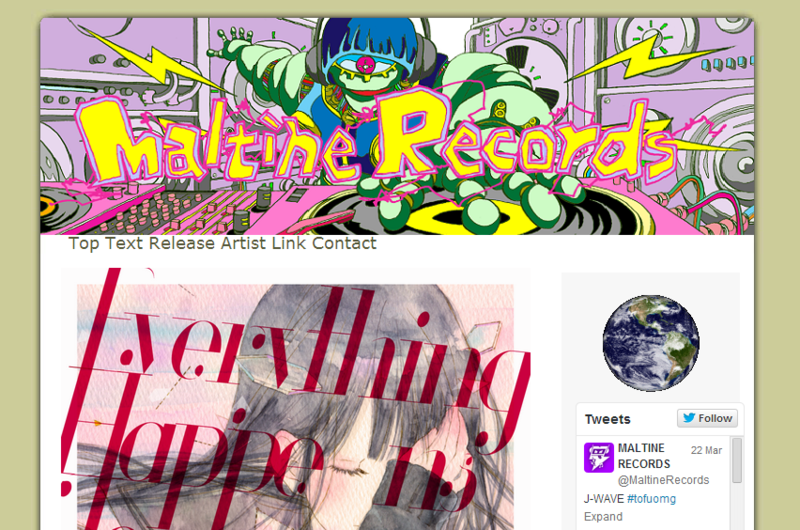Note: This website was automatically translated, so some terms or nuances may not be completely accurate.
tomad × Yasuhiro Tsuchiya: Part 1 "How to Capture the Atmosphere of the Internet"

tomad
Maltine Records

Yasuhiro Tsuchiya
Dentsu Inc.
This edition of "One-Click Radius" features an interview with tomad, founder of Japan's leading net label " Maltine Records."

There's a generation that practically grew up listening to Maltine.
Tsuchiya: First, could you tell us what prompted you to start Maltine Records (hereafter, Maltine)?
tomad: When I was 16, I was making music with a high school classmate. We wanted to release our songs, but making a CD felt like a high hurdle. So we thought, why not create a website like a music label and release our music there? That was around 2005. At the time, there were many net labels overseas releasing music for free under Creative Commons licenses, and we modeled ourselves after that.
Tsuchiya: I believe you initially released your own music. How did other artists come on board?
tomad: Back then, I was really into niche music like IDM (Intelligent Dance Music), breakcore, and artists like Aphex Twin. I was writing a blog about that kind of music, and the community sort of formed from the people I connected with through that blog.
Also, on the VIP board of 2ch, there was a thread where people would stream club music via internet radio and get real-time reactions posted. I participated there too, and that's where my circle expanded as well. That thread ended up going on for about 300 threads.
Tsuchiya: That's amazing! There was a movement like that on VIP?
tomad: At an offline meetup for that thread, someone proposed actually trying to hold a club event. We did it at a small club in Shibuya that held about 100 people, and that's where I DJed for the first time.
Tsuchiya: So this was the period when imoutoid ( http://ja.wikipedia.org/wiki/Imoutoid ) was active on 2ch under the name "Famicom Alien."
tomad: Yeah, imoutoid was also on that thread, and that's how we became friends.
Tsuchiya: I first learned about Martinez from imoutoid. People were talking about this weird guy who was rearranging Aphex Twin tracks into anime song styles for some reason! When I first heard it, I thought it seemed like a joke, but actually, it was doing something pretty advanced and cool. From there, I found my way to "ADPRESSIVE CANNNOT GOTO THECEREMONY," released by imoutoid on Martine... Since then, I've listened to almost all of Martine's releases. Earlier, we mentioned IDM and breakcore. Back then, did Martine already have a distinct label color or direction?
tomad: The foundation is club music, but rather than limiting ourselves to genres like house or techno, it was more about releasing a wider range of music we genuinely liked.
Tsuchiya: Early on, there were a lot of electronica-style tracks, right? Lately, there's been more dance-oriented stuff.
tomad: True, the early days had a lot of electronica and ambient influenced by it. Back then, Japan had this nerdcore culture, and there was also the MAD video trend on NicoNico Douga, which influenced Martine too.
Tsuchiya: Are most of the artists releasing on Martine around the same age as you, tomad?
tomad: When we started, most members were around our age, but lately it's been more like around 20 years old.
Tsuchiya: I think Martine is quite a famous label even among net labels. Do artists still send you demo tracks?
tomad: We get a lot. So the bar for getting picked from a demo keeps getting higher.
Tsuchiya: Martine is known not just for the music but also for its artwork, right?
tomad: We put a lot of effort into crafting the visual image, including the website. We also release apparel through Martinez, and it feels like we're creating a cohesive overall image by combining these elements.
Tsuchiya: It seems like a lot of people want to work on Martine's visual design, not just the music.
tomad: That's right. There's a generation that grew up listening to Martine.
Tsuchiya: Oh, I see! Since they started in 2005, it makes sense that such a generation exists.
tomad: It's totally possible to meet Martine around age 15 and keep listening all the way until you're 20.
Bringing the Internet's Atmosphere into Physical Space
Tsuchiya: You hold events regularly, and each one seems to have a distinct concept and feels strategically planned. I think real-world events are especially important for net labels. What do you consider when organizing them?
tomad: We don't want events that are just about gathering or making noise. We want releases online to lead to tangible events in the real world. The concept changes each time.
Tsuchiya: You have an event called "Tokyo ( http://tokyo-0505.cs8.biz/ )" happening on May 5th, right?
tomad: Yes, it's at Liquid Room in Ebisu. The concept for this "Tokyo" event is to invite overseas artists who have released on Multine and are close online, but haven't met in person yet.
Tsuchiya: So you release music by international artists too. Do you get a lot of traffic to Martiné from overseas?
tomad: It's increased dramatically over the past year or so. I think SoundCloud ( http://soundcloud.com/ ) has had a big impact. Also, releases with sounds and artwork that are somewhat internationally conscious might be gradually paying off.
Tsuchiya: Conversely, some Japanese artists on Martine are now releasing through overseas labels too.
tomad: That's right. I feel like the sense of Japan versus overseas is fading, and things are becoming increasingly flat. We have over 10,000 followers on SoundCloud, and looking at recent followers, they're almost all foreigners. People are listening regardless of borders.
Tsuchiya: This flattening without regard to borders is a phenomenon unique to the internet, isn't it?
This series has "the Internet" as its theme. In the previous interview with the IDPW folks, we talked about "reality on the Internet" and "what feels Internet-like." Do you have any particular thoughts about the Internet, tomad?
tomad: Hmm... quite a lot, actually.
Tsuchiya: When you release something new, do you think about structural things like "how to make this trend widely?" Or reading the air, like "this topic is hot right now"?
tomad: No, it's more about deliberately stepping away from that... For example, the current vibe in Japan's web industry is this kind of marketing where you create a website because you want to promote a specific product or service. That's mostly about extending reality, or using the internet to make people see more of the real world. But what Martinez wants to do isn't that. It's more about capturing that vague, intangible atmosphere of the internet.
Tsuchiya: What does that mean specifically?
tomad: At Martinez, we make T-shirts too, and sometimes the designs include QR codes. Scanning these QR codes lets you download unreleased songs. By physically embedding the internet's atmosphere like this, we're thinking about ways to spread that internet vibe into physical space.

It's like "feeling like" creates more "feeling like."
Tsuchiya: Spreading the atmosphere of the internet into physical space! Hearing that reminded me of what the IDPW folks said in our last interview. They mentioned that when they tried to physically embody "internet-ness" at the Internet Yami Market, everything ended up looking like it had passed through the internet. Like, there was an impersonator at the market, and watching them felt like watching ultra-high-definition YouTube.
tomad: I definitely think that kind of thing exists—where your perception of reality itself changes because it's filtered through the internet. I think it's most pronounced in how the generation younger than me, those under 20, use Tumblr ( https://www.tumblr.com/ ).
Tsuchiya: How are they using it?
tomad: They share these vague, fuzzy feelings through images... It's like the images themselves become words.
Tsuchiya: When I see people who are really into Tumblr, it doesn't feel like they're just scrapbooking images they like! It feels more like people who follow each other are uploading things to explore abstract ideas together, like "This image has that 'feel' to it, right?"
tomad: Exactly. It's like "feeling" breeds more "feeling."
Tsuchiya: Like, something super nonsensical, like a single piece of sushi mysteriously placed on a desk (laughs), or a chaotic collage of all kinds of images, or combinations of those—it's constantly happening at an incredible speed, and as a result, a unique style seems to be emerging.
tomad: Exactly. The visual image of "Tokyo" seems influenced by that kind of vibe too.

Tsuchiya: Ah... I get it (laughs). What is it about this feeling? How does it become like this?
tomad: It's hard to put into words, but I think it's probably about pushing things further and further away.
Tsuchiya: Like it's heading toward nonsense?
tomad: Exactly, toward the nonsensical. Though lately, that nonsensical direction has come full circle and become cliché instead.
Tsuchiya: That's tricky (laughs). Is there some charismatic figure who deliberately aims for this vibe and makes this tone their signature? Or did it just become a style because everyone started reblogging images with this kind of atmosphere?
tomad: I think that uncertainty is part of what makes it feel like the internet. There's this web art magazine called DIS magazine ( http://dismagazine.com/ ) in London, and I feel like it's heavily influenced by Tumblr culture too.
Then there's this netlabel called PC Music ( http://pcmusic.info/ ), which also has that distinct "vibe." PC Music releases are just the visuals paired with the tracks uploaded to SoundCloud – that's the entire release.
Tsuchiya: First time seeing PC Music. It's cool!
Tumblr's influence is bringing this kind of image culture
tomad: Personally, I think Tumblr's influence is bringing this image-based culture. On Tumblr, everyone posts images of things they like, connecting with others who share those interests through visuals alone—no words needed. That means communication transcends borders.
Plus, when you post links on Facebook, images show up, and Twitter displays images too. The visual image space on SNS is constantly expanding.
Tsuchiya: I see. That's definitely true.
tomad: Following suit, SoundCloud started displaying larger icons too, right? Images are becoming increasingly important. Even with music, I feel like more and more pieces are emerging where the visual image comes first, and then background music is added to it.
Tsuchiya: So it's the opposite of how it used to be. Instead of adding visuals to music, it's adding music to visuals.
Tomad: That movement started around two years ago, and Seapunk (※2) is a perfect example of that.
Tsuchiya: So it starts with that unique world—like dolphins, the sea, crystals—and the music comes later? With Martinè, I wonder if the music comes first. Given this trend, are you considering strategies around wrapping your work in visual imagery?
tomad: I've been thinking about that constantly lately, and I'm not even sure if it's music-first anymore (laughs). I actually feel like doing visuals-first could work too. For example, the compilation "Citizen Poolside" ( http://maltinerecords.cs8.biz/122.html ) was completely visuals-first. We made the visuals first and then asked people to create songs that fit those visuals.

Tsuchiya: Really?!
tomad: There's this disco unit overseas called POOLSIDE, and their promotional videos show them hanging out and having fun by a pool in some fancy overseas house... that kind of vibe. You kind of envy that, but in Japan, most people don't have pools... I mean, when you think "pool" in Japan, it's gotta be a "public pool," right? (laughs). So we spent a lot of time developing that visual image and built the album around it.
Tsuchiya: So translating that cool poolside vibe into a Japanese context became the public pool (laughs). Interesting. I guess you could approach concept albums differently too, beyond just visuals. Like creating a story first and then adding music to it... Any thoughts on what comes next?
tomad: I definitely want to make videos, but it's costly, and it's hard to find a video artist I really want to collaborate with. Since YouTube exists, the need for promotional videos in music is high, so I definitely want to challenge myself with that someday.
Tsuchiya: It's true, everyone embeds promotional videos in their blogs and SNS to recommend songs to each other, so music and video are often played together nowadays. Just having a video makes the music easier to spread.
Data is, in principle, something anyone can copy for free.
Tsuchiya: All of Martin's audio is free, right? Even if you say you do it because you love it, there must be limits. I'm genuinely curious how you monetize it.
Tomad: Data is fundamentally something anyone can copy for free. If you make it a system where only paying customers can listen, it narrows the audience, and I don't want that. I'm thinking about how to monetize on top of that, but it's incredibly difficult.
Right now, the main way money moves online is still ad revenue, right? But once you start running ads, you have to chase more page views, and that leads to prioritizing what's easy to understand, which I also don't want to do.
There's also the paid membership model, but that doesn't feel right either. So, the areas where we can actually make money keep shrinking. However, the apparel line we recently started is great because, while it's physical, it allows us to monetize simply without compromising the label's value.
Tsuchiya: With physical goods, there's still a sense of satisfaction when you pay for something, right?
Tomad: That's right. Plus, getting people to wear the clothes helps reach folks who weren't interested in Martine before.
Tsuchiya: What about soliciting donations?
Tomad: We don't do donations, but I really liked the crowdfunding system, so I started "PICNIC" ( http://picnic.sc/ ), a crowdfunding platform supporting artist activities. However, since you're raising money, there's a need to be very thorough, which takes more time than releasing something for free. It also feels like you have to reveal your ideas upfront to raise funds.
Tsuchiya: That's true.
tomad: That's why I feel some projects are a good fit, while others aren't. But just repeating "make a song and release it" feels fleeting and destined to get buried. So, including events, how do you build momentum... I think skillfully managing that aspect is crucial for artists in the post-SNS era.
( To be continued)
Interview Location: Maltine Records Dogenzaka Office
(※1) MAD: A technique involving patchwork editing of various sounds and visuals.
(※2) Seapunk: A new music genre said to have emerged from the internet around 2011. True to its name, it incorporates many ocean motifs.
Was this article helpful?
Newsletter registration is here
We select and publish important news every day
For inquiries about this article
Back Numbers

2014/04/07
IDPW × Yasuhiro Tsuchiya: Part 2 "It's fascinating how things with completely different values and religious perspectives can all coexist side-by-side."

2014/03/31
IDPW × Yasuhiro Tsuchiya: Part 1 "The 'Feel' Transmitted via the Internet Appeared at the Internet Black Market"
Author

tomad
Maltine Records
Founder of the internet label "Maltine Records." Began DJing using a laptop around 2006. Has played at various clubs primarily in Tokyo, including LIQUIDROOM, UNIT, AIR, and MOGRA. Since 2009, has also organized events for his own label several times a year at clubs in Tokyo. <br/> <a href="http://maltinerecords.cs8.biz/" target="_blank">http://maltinerecords.cs8.biz/</a>

Yasuhiro Tsuchiya
Dentsu Inc.
zero/Dentsu Lab Tokyo
Creative Technologist / Researcher
After working at an advertising production company, joined Dentsu Inc. in 2006. Assigned to the CX Creative Center in 2021. Engaged in research and development of products centered on fields such as biosignals and robotics, aiming to develop and implement "slightly futuristic communication" utilizing technology.


